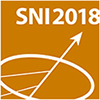Power-to-X technologies for conversion of electric power into chemical energy play a key role in many concepts for a future energy supply based on renewable sources. A good example is CO2 hydrogenation to methane. Such reactions have extensively been studied under steady state conditions. However, for utilization of power from fluctuating renewable sources the reactors and especially the...
Iridium oxide (IrO$_2$) has been suggested as a promising candidate for efficient water oxidation, and thus catalyst materials based on nanostructured iridium (hydr)oxide have recently been developed and commercialized. In this work, we present a comprehensive spectroscopic study of commercially available iridium oxide-based electrocatalysts (“nano-IrO$_2$” and “IrO$_2$@TiO$_2$”) using...
LISEL (Low energy Isobar SEparation by Lasers) is a future project at the DREAMS (DREsden Accelerator Mass Spectrometry) facility to widen the applications of AMS by extending the range of measurable (radio-) nuclides.
AMS has proven to be a versatile tool capable of detecting a large number of long-lived radionuclides at the ultra-trace level – i.e. isotope...
Catalysts are complex materials whose structure and reactive behaviour are closely interlinked. All length scales are relevant in catalysis, from metal nanoparticles, to porosity (micro- meso- and macropores), to global structure (e.g. grains, pellets or monoliths). While electron microscopy is well suited for analysis at (sub)nanometre resolution, this is often limited to small fields of...

